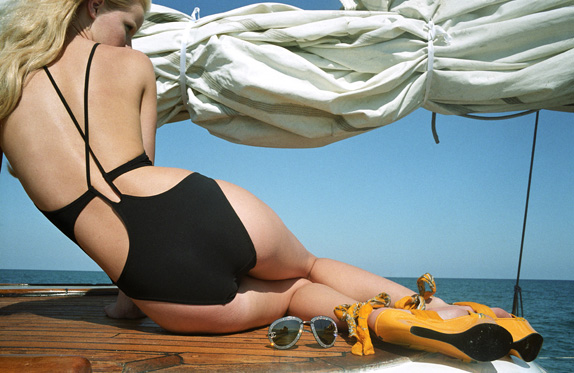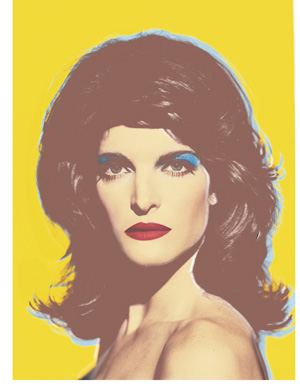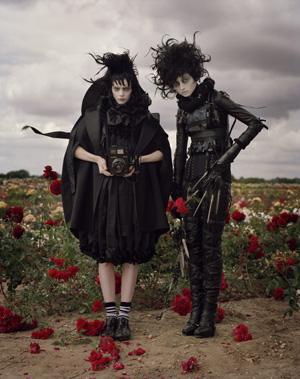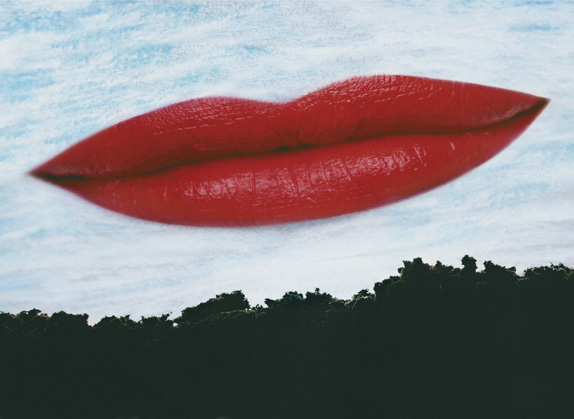【The Sex Files 2 A Dark XXX Parody】
At the Bazaar
Fashion & Style

Ralph Gibson, Caroline Winberg (Harper’s Bazaar, May 2005).
It’s easy to overlook that Vogue, seemingly eponymous with the word fashion, debuted after Harper’s Bazaar,America’s first fashion magazine. Steeped longer in the Victorianism that defined the nineteenth century, Bazaarset about cataloguing the changes that an era of colonialism and industrialization brought to women’s dress. The original weekly (titled Harper’s Bazar)saw its first printing in November of 1867, as a slim, sixteen-page newsprint volume featuring drawings and articles on every aspect of fashion. The news item “Colors” reads more like an issue of political importance. (“Bismarck, or gold-brown, is the prevailing shade, and reappears in some guise almost every where. The new shades of green are its only formidable rivals. The deep green known as ‘Invisible,’ now called ‘Mermaid,’ is in great favor.”) An early cover from an 1868 issue shows hand-drawn hairstyles alongside paper-doll-like figures, nodding at French sophistication with hairdo trends like the “diadem of curls” and the “fleur de lis coiffure of braids.”
“Harper’s Bazaar: A Decade of Style” at the International Center of Photography catalogues the transformations that technology of a different sort wrought on women’s bodies. The collection of more than thirty images—vivid color photographs from the past decade under editor Glenda Bailey—features work by famed fashion photographers such as Patrick Demarchelier, Terry Richardson, and Peter Lindbergh, as well as art-world luminaries like Nan Goldin and Chuck Close.

Patrick Demarchelier, Stephanie Seymour (Harper’s Bazaar, February 2002).
The century’s technology manifests itself twofold, on both sides of the camera. In one reference to the decade’s new machinery, a bright-lipped young model’s face is pulled back like plastic. Perhaps less obviously, in one editorial Chloë Sevigny plays a troubled celebrity, showing the voyeuristic quality the camera (especially the digital camera) brought to magazines. One tabloid-like photograph actually shows Sevigny solemnly reading a tabloid article about herself.
Some of the photographs are nearly as cartoonish and abstract as their 144-year-old predecessors. In one, red lips float against a night sky; in another, Stephanie Seymour is rendered in Warholian bubble-gum hues. A pretty blonde’s slender back looks just as anonymous as the long-necked, hand-drawn women who posed in their mantelets at Bazaar’s inception.
The original mission statement of the magazine reads
A Bazaar, in Oriental parlance, is not a vulgar marketplace for the sale of fish, flesh and fowl, but a vast repository for all the rare and costly things of earth–silk, velvets, cashmeres, spices, perfumes, and glittering gems; in a word, whatever can comfort the heart and delight the eye is found heaped up there in bewildering profusion. Such a repository we wish Harper’s Bazar to be.

Tim Walker, Untitled (Harper’s Bazaar, October 2009).
The exhibition makes a case for Bazaar’s place in the magazine world as a home for the fantasy and romanticism of an earlier era. (Perhaps this explains why the median age of the Bazaarreader towers almost a decade above those of Vogueand Elle.) Echoes of Bazaar’s days as a breaking fashion news source resonate in Marc Jacob’s hour-by-hour fashion diary; its past as “the vast repository” for the rare and costly is no more apparent than in a leather-clad Naomi Campbell riding a crocodile. One leaves wondering what whimsical names a nineteenth-century editor might have bestowed on the black, snarly hairstyles of a Tim Burton–inspired shoot or on Lady Gaga’s cotton-candy colored blowout. The “fleur de lis coiffure of braids” may look ridiculous to us now, but in a few months (or moments) it will probably be on Lady Gaga’s head. The word fashionmay derive from the root for invent, but after nearly a century and a half of the magazine, its silhouette hasn’t changed much.

Patrick Demarchelier, Man Ray’s floating lips (Harper’s Bazaar, February 2002).
Ali Pechman is a writer living in Chicago.
Search
Categories
Latest Posts
Reinventing the Wheel
2025-06-26 00:53How to help with COVID
2025-06-26 00:04NASA's 'mole' tried to dig into Mars. It didn't go as planned.
2025-06-25 23:40How to help with COVID
2025-06-25 23:23Feminists of the Basque Country
2025-06-25 22:31Popular Posts
Why Trump Is an Effective Negotiator
2025-06-26 00:46Verizon sells Yahoo and AOL to Apollo for $5 billion
2025-06-25 23:42Twitter bans alt
2025-06-25 22:33Soundtrack to a Drug War
2025-06-25 22:29Featured Posts
The Bananas-Ass Ex-Friend
2025-06-26 00:47Roy Moore's attempt to discredit journalists backfires
2025-06-26 00:06EU accuses Apple of anti
2025-06-26 00:04Small businesses had a brutal pandemic. Amazon's income tripled.
2025-06-25 23:16The Musk of Success
2025-06-25 22:49Popular Articles
The Ovid of Loserdom
2025-06-25 23:23Facebook's Oversight Board upholds Trump's suspension
2025-06-25 23:16YouTube star Jake Paul moves into his $6.9 million Calabasas mansion
2025-06-25 23:15Cat gets its very own newspaper to prrrruse while using the bathroom
2025-06-25 23:10The Budget and the Political Imagination Deficit
2025-06-25 22:50Newsletter
Subscribe to our newsletter for the latest updates.
Comments (758)
Unique Information Network
Looking for Twin Peaks
2025-06-26 00:31Fashion Information Network
Meghan Markle has written a children's book about the bond between father and son
2025-06-26 00:09Highlight Information Network
Hillary Clinton saw 'Dear Evan Hansen' last night, met the cast, and signed a cast
2025-06-25 23:51Neon Information Network
'Mare of Easttown' is a crime drama that feels like a family feud
2025-06-25 23:17Focus Information Network
Don’t Give Up on Universities
2025-06-25 22:27